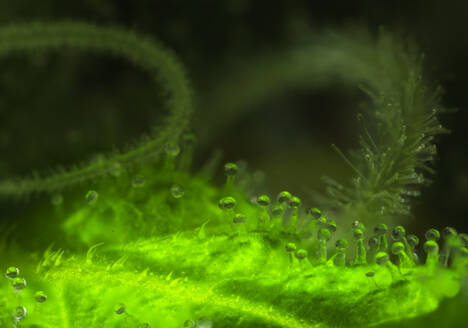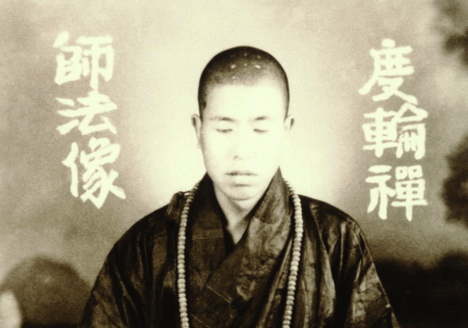GUINEA – A Guerrilla-Neurophilosophical Approach to High Science
What is it like to be high? What is the positive potential of this altered state of consciousness for medical and inspirational uses? How exactly does marijuana enhance cognitive functions like our ability to remember episodes, our attention, and perception, and our ability to recognize patterns? To introspect bodily states, to empathically understand others, and to generate new ideas and insights? How do the various cannabinoids and terpenes contribute to the high? Can we systematically research the high? And how important is research in this field?
The Positive Impact of the High on Individuals and Cultures Worldwide
According to U.N. estimates, cannabis is the most widely cultivated and used psychoactive substance worldwide. In recent years, it has become more and more evident that medical marijuana has a huge therapeutical potential for numerous indications and is used by many as a cognitive enhancer for inspirational and other purposes. Without a doubt, we can also see a lot of abuse. Even though remarkably non-toxic, marijuana can certainly negatively affect the lives of consumers in various ways if abused. But many skilled users worldwide have discovered that a marijuana high can be an incredibly useful tool for many of their activities. We have innumerable reports from many cultures throughout history about how marijuana has helped individuals to work better creatively, to perceive all kinds of new patterns, to inspire them in their sexual relations, to come to introspective and other insights, to deepen their relationships with others and to personally grow, to name just a few of the enhancements reported. These enhancements have not only touched and transformed individual lives, but through these indviduals work, whole societies worldwide have witnessed the positive effects.[1]
A concerted research effort on the marijuana high and its positive uses would not only shed light on the medical potential of marijuana, but also give us a better picture of how cannabis use has influenced science, literature, art, and other cultural developments worldwide.
Innumerable inspirational and medical users would profit from knowing more about the exact cognitive alterations resulting from various strains. And, as I will argue here, researching the marijuana high may lead to important advances in our scientific understanding of the nature of mental processes like introspection, empathy, or the generation of insights.
In recent years we have learned that marijuana strains with high ratios of CBD (cannabidiol) can give patients suffering from epilepsy an effective treatment without getting them too high, which is a blessing for many. However, we should not turn away too quickly from the “high” as something we consider solely as an unwanted side effect. Many users still seek a certain high and its respective mind-alterations; the high will always remain crucial for certain therapeutical, inspirational, and other uses.
The ‘Gold Standard’ for Medical and Inspirational Use
The experience of medical marijuana patients so far has clearly shown us that natural strains of marijuana work a lot better than synthetic cannabinoid extracts or natural extracts of single cannabinoids like THC. I agree with medical expert Lester Grinspoon, who calls natural marijuana the “gold standard” for medical marijuana.[2]
We have to keep in mind then, that the various “highs” with their individual character valued by millions of users comes from natural strains with different cannabinoid and terpene and flavonoid profiles. Cannabis strains contain more than 80 different cannabinoids, approximately 120 different terpenes and more than 20 flavonoids. Therefore, we should obviously expect significant and interesting variations in the high coming from different strains. But how can we make serious progress when it comes to researching the ways in which various cannabis strains alter consciousness?
A New Approach to Researching the Marijuana High
In short, I would like to suggest GUINEA, a neurophilosophical approach to High Science. GUINEA is an unconventional integrative and interdisciplinary approach that comes in two phases. First, we need careful anecdotal data mining of reports from “guerrilla” users of marijuana. In other words, we need to critically analyze detailed reports of experienced marijuana users about their experiences with marijuana strains and each strain’s mind-altering potential. This approach is not new. Both Harvard scholars Charles Tart and Lester Grinspoon started such an approach more than 40 years ago.[3] While Tart send a questionnaire about marijuana and its effects to 750 students and evaluated the feedback, Grinspoon collected reports from various literary and other resources. Tart’s and Grinspoon’s approach was based on the insight that set and setting significantly influence the high. Tart himself pointed out that the usual scientific method of observing subjects with no previous experience with marijuana in a laboratory setting just leads to anxiety and other reactions – reactions not caused by marijuana intake but by the sterile scientific setting. Another important fact that Lester Grinspoon and I have repeatedly stressed in the past is that much depends upon the skill of users to learn how to use marijuana and how to “ride a high” – just like surfers need to learn to use a surfboard to ride a wave.[4]
Ideally then, scientists should analyze stories of skilled psychonauts if they want to find out about the psychoactive potential of a high. Traditionally, scientists would work with neophyte test persons when testing the effects of marijuana but, of course, they lack the knowledge to make use of the altered state of mind. More experienced users not only know how to use their strains for various enhancements given their own psychological make up and mood, they will also be able to introspect subtle nuances in cognitive changes brought about by various strains. A true wine taster needs vast knowledge about the nature of various grapes, soils, production and processing methods, as well as the storage of wines. The more he knows, the more he will be able to discriminate the nuances in his taste experience. For marijuana psychonauts, this kind of expert knowledge will be even more crucial. For them, the issue will not be mainly about taste experiences, but about a whole array of cognitive enhancements. The better their knowledge of psychology, the more they will be able to introspectively tell us in which ways a strain leads to various cognitive alterations in such complicated processes such as attention hyper focussing, pattern recognition or empathic understanding. Lester Grinspoon’s internet project “marijuana-uses.com”, which collects reports and essays from experienced users is a unique resource for this approach because it presents a fine selection of reports from skilled marijuana users with great psychonautic abilities.
As a result of the critical evaluation of skilled psychonautic user reports, we will be able to make hypotheses about the effects of marijuana strains on higher cognition. The formulation of those hypotheses involves not only experiential reports but will include state-of-the-art knowledge of various cognitive science disciplines. In the second phase of GUINEA, these hypotheses should be taken to empirical testing. In my previous book High. Insights on Marijuana, I have generated various hypotheses based on the analysis of anecdotal reports from skilled marijuana users which should be further taken to scientific testing, including the hypotheses that a marijuana high leads to certain changes and enhancements in bodily perception, introspection, empathic understanding, pattern recognition and to an enhanced ability to generate insights.[5]
GUINEA is not only an interdisciplinary scientific approach, but also a cross-field one, meaning that we not only need to include knowledge from scientific disciplines such as the philosophy of mind, the neurosciences, psychology, and other cognitive sciences, but also other cultural and sub-cultural fields, such as the legal and Guerrilla cannabis growing scene or from shamanic and other cultures with experience of cannabis. Let us first look at the interdisciplinary scientific fields of knowledge involved.
Neurophilosophy and the High
If we want to understand how a marijuana high affects higher cognitive processes and abilities like episodic memory retrieval, introspection, or spontaneous insights we will have to turn to neurophilosophy – a modern interdisciplinary approach of various mind sciences. For instance, let’s look at the question of whether a high can enhance empathic understanding. How does empathic understanding work, in general? In the last 20 years, there have been heated debates in the philosophy of the mind and in psychology. After the groundbreaking work on conceptual analysis by philosophers, scientists focused their attention on neuroscientists who claimed to have found a specialized neuronal system – the mirror neuron system – underlying our capacity to feel with others and to understand them. The debate concerning empathy has led to fundamental advances in our understanding of the nature of empathy, which is extremely valuable when it comes to the understanding of pathological states such as autism or psychopathic behaviors.
Of course, many questions remain debated in this field. What is the exact role of the mirror neuron system? Autistic children have strong deficiencies in their empathic understanding; are these related to an underdeveloped mirror neuron? Which cognitive abilities are involved in empathic understanding? It is important to see that these debates are still ongoing; the study of empathy today is a common interdisciplinary effort in which philosophers of the mind, neuroscientists, cognitive scientists, evolutionary biologists, developmental psychologists, and many others are discussing new findings to integrate them into a unified picture of empathy. Likewise, whole arrays of researchers from various areas discuss other mental abilities, such as introspection or spontaneous insights. We have a myriad of reports that a marijuana high affects many of these complex mental abilities. Consequently, researching the high demands a similar interdisciplinary approach.
The Endocannabinoid System (ECS)
The most promising approach to researching the high within the neurosciences was certainly the discovery of one of the major physiological systems in our brain and body, the endocannabinoid system in the beginning of the 1990s. Interestingly, this system is found not only in humans but is also common to other vertebrate animals and can even be found in some invertebrate animals, which shows its importance in the process of evolution. As we now know, the effects of cannabis on both body and mind come because the cannabinoids from the plant are similar to those produced endogenously by our own brains. So, we all have a signaling system that involves endocannabinoids (anandamide and 2-AG) and endocannabinoid receptors (CB-1 and CB-2) involved in the regulation of various processes. The endocannabinoid system (ECS) is involved in the regulation of many bodily and mental processes including stress response, appetite, immune function, pain, sleep, and memory.

New findings concerning the ECS in the last 20 years have to a large degree explained many anecdotes about positive medical marijuana uses and inspirational uses. To name one well known example, we now know that the endocannabinoid system also controls appetite; when consumed phytocannabinoids (from the cannabis plant) interfere with this signaling system, it may be stimulated to give you the “munchies”, an effect that has been consistently reported by marijuana users for centuries. I will not go into the details of our knowledge of the ECS here. Let me just point out that although we already know about many of the functions of the incredibly versatile and important ECS in our brain, I believe that we are still at the beginning when it comes to understanding its role in various higher cognitive processes. Scientists investigating the ECS should definitely look into the details of marijuana user reports about the mind-altering potential as a guide to find more functions of the ECS in cognition.
Various Brain Imaging Techniques
Once we have generated scientific hypothesis based on critically evaluated anecdotal reports, we can start to design experiments with volunteers being subjected to brain scanning during a high. New imaging techniques like functional magnetic resonance imaging (fMRI), computer tomography (CT) or Positron Emission Tomography (PET) could augment our understanding of how the high affects various cognitive abilities such as pattern recognition, creativity, and empathy. or introspection. Such practices could inform the neurosciences about the possible functions of the endocannabinoid system and its functional relations to other neuronal systems. We first need to have experiential reports of marijuana users about the cognitive effects of a high to know what we are looking for and to start constructing experiments.
Other Fields of Knowledge
The “neurophilosophical approach” to the study of the marijuana high will include just as many scientific disciplines as the general mind sciences studied today – evolutionary biology and psychology, a whole range of cognitive science disciplines, linguistics but also, for instance, an ethno-botanological perspective as can be found in the work of Ronald Siegel, with his groundbreaking research on the interaction between animals and psychoactive plants.[6] Also, scientists need to understand that there is much relevant knowledge coming from various cannabis cultures and subcultures that have evolved over thousands of years. Scientists researching the marijuana high should be interested in guerrilla marijuana breeder’s cannabis wisdom, and shamanic knowledge, as well as looking at what professional agricultural cannabis engineers have to say about their marijuana strains. This is why I emphasize that the approach to researching the marijuana high should not only be scientifically “inter-disciplinary,” but also “cross-field”. Shamanic wisdom, the knowledge of cannabis breeders and anecdotal reports of skilled ‘guerrilla’ cannabis users as those collected by Grinspoon are usually not considered to be anything that should even enter the realms of science; but I believe it should be taken very seriously. A careful analysis of these fields of knowledge would help to lead the way for other scientists to come up with new hypotheses and experiments to investigate the nature of a cannabis high.
Philosophers, Neuroscientists, and Shamans
So far, there are no significant budgets for a concerted research program of the marijuana high. Governments worldwide have been heavily influenced by various interest groups to hinder the research of one of the most promising plants ever known to man. Presumably, an independently operating foundation would be a better place to look for the necessary open-mindedness and empathy for the millions of people who would profit from an interdisciplinary research center using GUINEA. It would be an unconventional decision to investigate the positive potential of the high – which is already outrageous to many. Supporters would also have to understand that our path into the natural and fascinating jungle of the altered human mind cannot be an autobahn made of concrete that we brutally build into this jungle. Many empirical studies with neophyte study participants taking a psychoactive substance for the first time have been so destructively intrusive in their whole setup that they show us more about the participants’ reactions to their environment than about the effects of the respective psychoactive substance. The guerrilla-neurophilosophical approach of GUINEA would acknowledge the value of wisdom, not only of experienced guerrilla marijuana users but also of guerrilla breeders, shamans, and other cannabis subcultures worldwide
Importantly, this research project as a whole will not only help us to better understand what is going on when we get high and to understand the medical and inspirational potential of cannabis. It will also help us to find out more about the nature of human consciousness itself. Readers of Oliver Sacks’ books should be well familiar with this approach. Sack’s detailed anecdotes about his patients with neurological disorders or syndromes such as Tourette’s syndrome do not only tell us much about the nature of respective pathological conditions, they help us to come to a new understanding of the nature of the human mind itself.[7]
The systematic changes of various cognitive processes such as, for instance, our empathic understanding during a marijuana high could be extremely interesting for researchers in their respective fields, leading to a better understanding of the functional architecture of those states themselves.[8] This is an important lesson – a cross-field neurophilosophical study of the marijuana high (or altered states in general) will not only help us to understand the altered state of mind of the high better but also help us to understand the nature of the most complex abilities of the human mind, like introspection, empathy, creativity and the ability to generate spontaneous insights.
To conclude, then, here is my recommendation for how to research the marijuana high: philosophers, cognitive scientists, psychologists, biologists, anthropologists, neuroscientists, and others, research the high. Don’t be shy. Work together. And don’t be snobs. Guerrilla users, urban guerrilla growers, tribal shamans, or Indian sadhus may know a lot more than you imagine.
****
This article was first published here: http://sensiseeds.com/en/blog/guinea-guerilla-neurophilosophical-approach-high-science-part/
[1] Compare Ellen Komp’s http://www.veryimportantpotheads.com/ for a list of influential marijuana users and a description of their respective uses.
[2] For an excellent essay on this subject see Malmo-Levine, David (2009) „Patented Pot versus The Herbal Gold Standard“, http://www.cannabisculture.com/node/19879
[3] Tart, Charles T. (1971). On Being Stoned: A Psychological Study of Marijuana Intoxication. Palo Alto, Cal.: Science and Behavior Books, and Grinspoon, Lester (1971). Marihuana Reconsidered. Cambridge, M.A. Harvard University Press.
[4] Compare my essay http://sensiseeds.com/en/blog/marijuana-surfing-and-riding-a-marijuana-high/ A more detailed version is in my Marincolo, Sebastian (2013) High. Das positive Potential von Marijuana, Klett-Cotta/Tropen, Stuttgart (in German).
[5] Marincolo, Sebastián (2010), High. Insights on Marijuana. Dog Ear Publishing, Indiana.
[6] See Siegel, Ronald K. (1989, 2005), Intoxication. The Universal Drive for Mind-Altering Substances. Park Street Press, Rochester Vermont.
[7] Compare for instance Sacks, Oliver (1986). The Man Who Mistook his Wife for a Hat. London:Picador.
[8] See my essay “Marijuana, Empathy, and Cases of Severe Autism”



